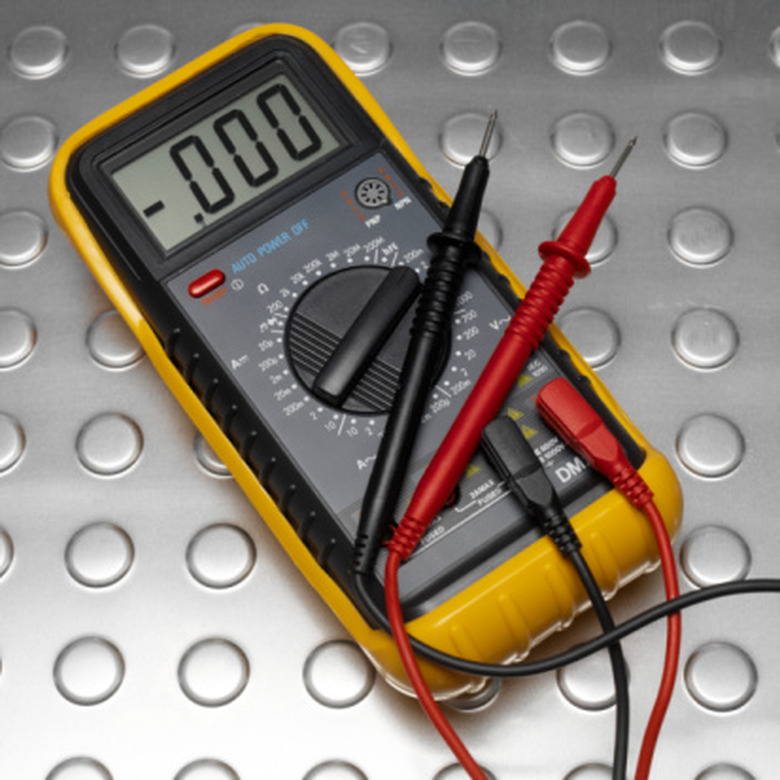How To Make A Step Down Transformer
Transformers are simple but extremely useful electrical devices, and they work because of a phenomenon known as electromagnetic induction. If you place a conducting wire in a changing magnetic field, the field induces an electric current in the wire, and where there's a current, there's a potential difference, or voltage. The converse is also true. A changing current in a conductor creates a magnetic field. Because the current has to be changing (in flux), transformers work only with alternating current electricity, which is an advantage of AC over DC power.
The voltage depends on the number of times the conductor passes through the magnetic field. You can transform the voltage in one circuit – the primary circuit – to a different voltage in a secondary circuit by adjusting the number of times the conductors for each circuit pass through the magnetic field. The device that does this is a transformer, and when it reduces the voltage in the secondary circuit, it's a step-down transformer. This is exactly what the the transformer on the power line outside your house does. It's easy to make your own step-down transformer, but it won't be as big and powerful as the one on the power line. It will work in exactly the same way, though.
Transformers Use Windings
Transformers Use Windings
A transformer uses a single conductor wound multiple times around a central core for the primary circuit, and a different conductor also wound multiple times around the same or a different core for the secondary circuit. The ratio of the number of windings in these coils determines the voltage in the secondary coil. The transformer formula, which follows from Faraday's law, is:
\(\frac{N_s}{N_p}=\frac{V_s}{V_p}\)
where Ns and Np are the number of windings in the secondary and primary coils respectively and Vs and Vp are the voltages.
In a step-down transformer, the secondary voltage is less than the primary voltage, so the number of windings in the secondary coil must be less than the number in the primary coil. If you know the voltage in the primary circuit and you have a target for the secondary coil, you achieve your target by adjusting the number of windings on both coils.
Constructing a Step-Down Transformer
Constructing a Step-Down Transformer
The most efficient transformers have ferromagnetic cores because this material becomes magnetized by the primary coil and transfers the energy to the secondary coil more efficiently that the coils can do by themselves. An easy way to obtain a ferromagnetic coil is to find a large steel washer from a hardware store or a wrecking yard. It should be 2 to 3 inches in diameter.
You can use any conducting wire to make the coils, but the best is 28-gauge magnetic wire, which is very thin copper wire coated with insulation. To create the primary coil, wrap the wire closely around the washer at least 500 times, keeping the wire tight together. Wind it in layers if necessary. Keep careful count of the number of windings and record the number. When you're done winding, keep the two ends free for connection to the power source and wrap masking tape around the wires to keep them in place.
Since you're constructing a step-down transformer, the number of windings in the secondary coil will be smaller. The actual number depends on the voltage you want, and you can calculate this using the transformer formula. Wind the secondary coil on top of the primary one, leaving the ends free to connect to a meter. Wrap the coil with masking tape, and then wrap the entire transformer with electrical tape to insulate it. The transformer is now ready to test.
Example Calculation
Example Calculation
Suppose you want to step down the 120-volt power from your home's power outlet to 12 volts. The voltage ratio is 12/120 = 1/10, so if the primary coil has 500 windings, the secondary coil should have 50.
Note that using your home voltage in this calculation is only an example, and the current passing under this much voltage will heat the wires quickly and would be dangerous to actually attempt to reduce. It's safer to use this rudimentary transformer for much smaller input voltages from safer sources. Do not leave the transformer connected for any length of time.
Warning
Do not attempt to use the transformer with your home's outlets or circuits.
Cite This Article
MLA
Deziel, Chris. "How To Make A Step Down Transformer" sciencing.com, https://www.sciencing.com/make-step-down-transformer-8048158/. 15 December 2020.
APA
Deziel, Chris. (2020, December 15). How To Make A Step Down Transformer. sciencing.com. Retrieved from https://www.sciencing.com/make-step-down-transformer-8048158/
Chicago
Deziel, Chris. How To Make A Step Down Transformer last modified March 24, 2022. https://www.sciencing.com/make-step-down-transformer-8048158/
